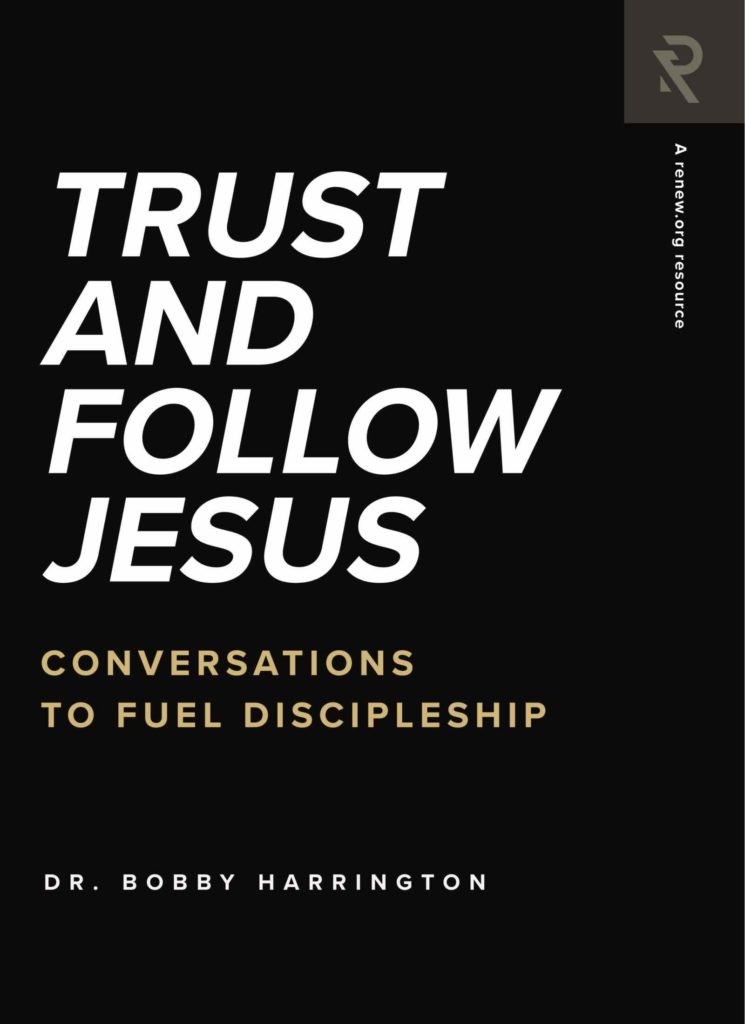
The Stages of Disciple Making: “Come and Follow Me” (Part 2)
(For Part 1, “Come and See,” click here.)
The next phase in Jesus’ strategy to develop disciple makers occurred when he moved from Nazareth to Capernaum. This town becomes the home base of his public ministry. It was a town of two to three thousand people in the first century, on the shores of the Sea of Galilee (and the ruins of the town, including the synagogue, Peter’s mother-in-law’s house, and other sites from Jesus’ time are still in existence to this day).
Note Matthew’s description of the turning point into this phase (4:12-13, 17):
Now when he heard that John had been arrested, he withdrew into Galilee. And leaving Nazareth he went and lived in Capernaum by the sea, in the territory of Zebulun and Naphtali. . . . From that time Jesus began to preach, saying, “Repent, for the kingdom of heaven is at hand.”
This phase is punctuated by Jesus’ invitation for those who have been in a relationship with him and have been watching him to now come and follow him. He asked them to make a decision. Matthew 4:18–19 describes it succinctly.
While walking by the Sea of Galilee, he saw two brothers, Simon (who is called Peter) and Andrew his brother, casting a net into the sea, for they were fishermen. And he said to them, “Follow me, and I will make you fishers of men.”
As we have stated elsewhere, verse 19 is a key verse by which we can define a disciple. The definition is contained in the invitation.
A disciple is someone who is following Jesus (“follow me”), being changed by Jesus (“and I will make you”), and committed to the mission of Jesus (“fishers of men”).
Once this phase started, it led the disciples, as those who had now made the decision to follow Jesus, more and more deeply into the life of a disciple. They continued to see, up close and personal, what Jesus was all about. They watched and listened as Jesus healed the demonic (Luke 4: 31–37), healed Peter’s mother-in-law (Mark 1:29–34), went about teaching throughout Galilee (Luke 4:42–44; Mark 1:35–39), cleansed the leper (Mark 1:40–45) and the like.
During this phase, Jesus exposes his disciples to a broader and deeper understanding of his teachings and the implications of his kingdom. They also learn by watching the reactions of people to Jesus and their questions for him. They are in a relationship with Jesus and with each other. Bill Hull estimates that there are 70 to 120 people involved with Jesus in this phase.
The broader community following Jesus is key. It takes a broader relational community around which new beliefs can be explored, expressed, practiced, and nurtured. In this phase, Jesus is discipling his followers, with the help of a new community.
How we apply the principles from this phase today?
The key turning point in this phase is commitment. The disciples have responded to Jesus’ invitation to follow him. They were prepared for this decision because of the relationship and trust established in phase one. Likewise, people enter this phase today when they turn to Jesus as followers and involve themselves in the community of a disciple maker(s). They still do not understand what it really means to trust and follow Jesus, but they are on the journey and in a relational community of disciples.
Remember to actively engage those who are making the decision to follow Jesus in further relationships—not just with you the disciple maker, but with others who collectively form a discipling community (a church).
Continue to expose them to true kingdom living and the fullness of Jesus’ teachings and especially the real-life struggles involved in following Jesus. Conflicts will surface and that should be expected. Relational conflicts are necessary to a disciple’s development.
Do not call people while in this phase of disciple making. They are not yet ready, and they have not proven the genuine nature of their commitment to following Jesus. We do not yet know if they will be Faithful, Available, Teachable, Sendable, and Obedient (the acronym FATSO).
This is an area where many of us make mistakes. We meet people who say the right things, they look good early on, seeming to get it and we decide to invest in them as small group leaders or disciple makers or youth leaders. Slow down: Jesus shows us by his example how to pick such people. This is also likely the reason why Paul told Timothy, “Do not be hasty in the laying on of hands” (1 Timothy 5:22).
Key points in the second phase:
- Start with people who have made the commitment to be disciples.
- Expose them to continued relationships, more teaching, and a broader discipling community.
- Let them see what it is to be a disciple in “real life,” with conflicts, tensions, etc.
- Resist the temptation to invite people from this phase into being disciple makers.
- Spiritual infants and spiritual children are most common in this phase.
(From discipleship.org. Used with permission.)









